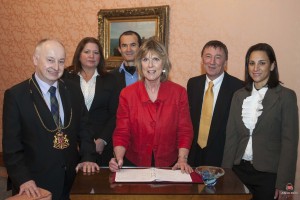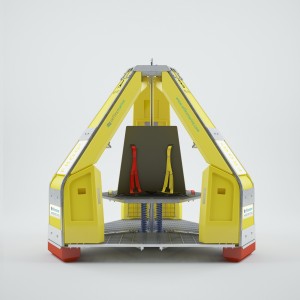First EU Firm to Gain Brazilian Accreditation
Reflex Marine has become the first European company to have its technology certified by the Brazilian Navy, the accredited body for offshore safety in the region.
The certification relates to the company’s FROG-6 device and comes off the back of rigorous testing to scrutinise its capabilities.
 The standard method of transfer offshore in Brazil is by helicopter and traditional rope baskets are commonly used as a contingency. However, the country’s continuing commitment to exploring evolving methods of transfer has led to Reflex Marine being approached by a number of regional operators.
The standard method of transfer offshore in Brazil is by helicopter and traditional rope baskets are commonly used as a contingency. However, the country’s continuing commitment to exploring evolving methods of transfer has led to Reflex Marine being approached by a number of regional operators.
Carol Richards, Reflex Marine’s regional sales manager for South America commented: “In recent years we have been working with a number of operators in Brazil to identify improvements that could be made in safety during crew transfer operations. Gaining this accreditation is a significant milestone in our relationship with Brazil’s burgeoning energy sector.
“Brazil is an important market and the interest shown by the Navy is clear evidence of the high esteem in which the skills, knowledge and expertise of Reflex Marine are held worldwide.”
 In December Reflex Marine welcomed personnel from the coastguard section of the Brazilian Navy to Aberdeen to witness the testing of the FROG-6 first hand. Representatives from the Directorate of Ports and Coasts explored Reflex Marine’s industry leading FROG capsule and witnessed immersion, load, vertical and lateral impact tests.
In December Reflex Marine welcomed personnel from the coastguard section of the Brazilian Navy to Aberdeen to witness the testing of the FROG-6 first hand. Representatives from the Directorate of Ports and Coasts explored Reflex Marine’s industry leading FROG capsule and witnessed immersion, load, vertical and lateral impact tests.
The national oil operator for Brazil, Petrobras is one operator currently reviewing its method of crane transfer and is looking at adopting the FROG-6 for its personnel transfer requirements.
The FROG-6 provides the perfect solution as substantially increased transfer rates coupled with MedEvac capabilities, mean the device is both versatile and robust and offers clients safety, value and cost-efficiency. The FROG-6 provides extensive protection from the four key risks of transfer including falling, collision, heavy landings and immersion. The buoyancy panels provides self-righting and floatation which protects passengers in the unlikely event of immersion in water. These buoyancy panels are coupled with a stainless steel frame to protect passengers from side impacts. The seats are mounted on coil springs which are combined with gas dampers to protect passengers from vertical impacts and heavy landings. The polymer foam shock absorbing landing feet also help to reduce vertical impacts. The device utilises quick release three-point harnesses which provide passenger safety, comfort, rapid egress and provides additional protection from falling. Additionally, secondary backup lifting assembly is provided to provide lifting redundancy.






